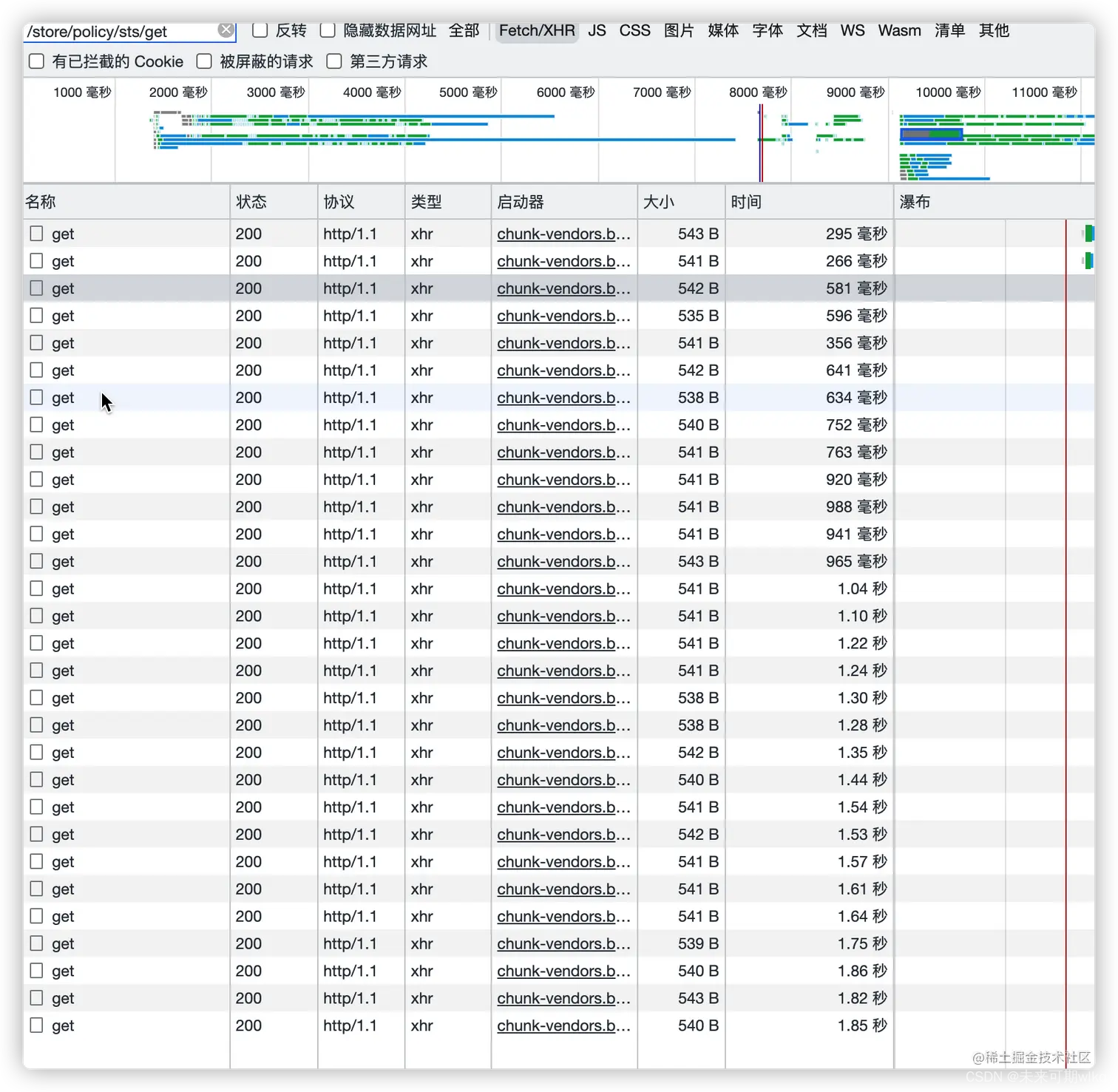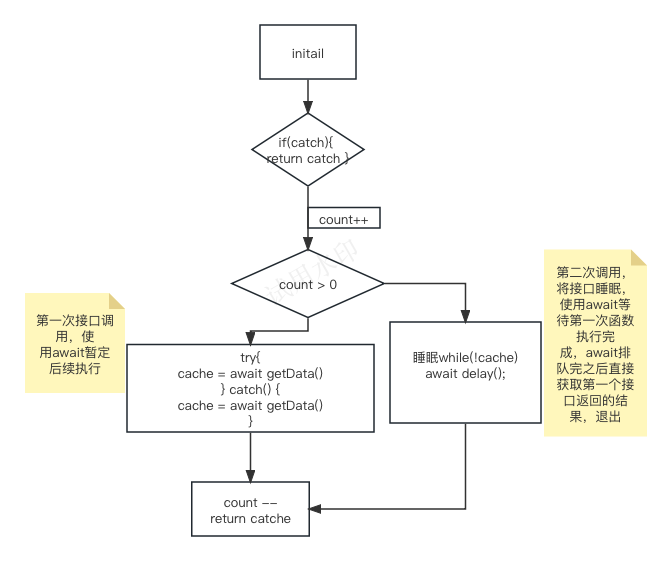⚠️!!!此内容需要了解一下内容!!!
1、会使用promise???
2、 promise跟 async 的区别???
async 会终止后面的执行,后续代码都需要等待 await 接收以后再执行,暂停页面执行顺序
promise不会,只要微任务结束,就会执行同步任务
3、宏任务,微任务执行顺序。???
如下图,页面调用同一个组件N次,如何进行优化
解决方案1.1:接口返回的 promise 状态进行缓存
<!DOCTYPE html>
<html lang="en">
<head><meta charset="UTF-8"><meta name="viewport" content="width=device-width, initial-scale=1.0"><title>02多请求cache-then</title>
</head>
<body><script>let cache = null;function getData() {return new Promise((resolve, reject) => {setTimeout(() => {console.log('进入请求接口')// resolve({msg: '请求成功', data: [1,2,3,4]})reject({msg: '请求失败'})}, 100)})}async function initialRequest(msg) {console.log(msg)if (cache) { return cache; }if(!cache) {// 是第 1 个就去请求// (这个示例代码没做容错,自己加)try {cache = await getData()/*不使用awaitcache = getData()缺点:请求失败的不好处理,每一个调用initialRequest函数,都需要.catch,代码冗余使用 awaitcache = await getData()代码逻辑错误:每一次 initialRequest 函数都会执行,都会产生自己的 getData 函数*/} catch(error) {cache = nullinitialRequest('报错请求')}}console.log('使用async,if判断之外的也不会执行')return cache;}
debuggerinitialRequest('第一请求').then((res) => {console.log('一请求--res', res)})initialRequest('第二请求').then((res) => {console.log('二请求--res', res)})</script>
</body>
</html>
有缺陷,在initialRequest函数中
1、不使用await
cache = getData()
缺点:请求失败的不好处理,每一个调用initialRequest函数,都需要.catch,代码冗余2、使用 awaitcache = await getData()
代码逻辑错误:每一次 initialRequest 函数都会执行,都会产生自己的 getData 函数
方案1.2:增加睡眠函数,配合async await 完美使用
<!DOCTYPE html>
<html lang="en">
<head><meta charset="UTF-8"><meta name="viewport" content="width=device-width, initial-scale=1.0"><title>02多请求cache-async</title>
</head>
<body><script>let cache = null;let count = 0;let flag = falsefunction getData() {return new Promise((resolve, reject) => {setTimeout(() => {console.log('进入请求接口')if (!flag) {reject({msg: '请求失败'})flag = true} else {resolve({msg: '请求成功', data: [1,2,3,4]})}}, 100)})}async function delay(ms = 200) {return new Promise(resolve => {console.log('进入睡眠函数')setTimeout(resolve, ms) // 200 毫秒以后执行这个promise});}async function initialRequest(msg) {console.log(msg)if (cache) { return cache; }if (count++) {// 如果有计数说明自己不是第 1 个,就等。注意这里判断的是加之前的 count// 循环里最好再加个超时判断while (!cache) { const abc = await delay();console.log('await会阻止向下循环', abc)} // 睡眠是什么意思} else {try {cache = await getData();} catch(error) {// 判断如果第一个接口请求失败,重新发起请求,直到成功count--cache = await getData();// cache = error}/*使用这个的好处,是从第二次的delay执行完之后都会获取到第一次 getData 执行的结果,不用每个函数都添加catch监听错误信息,也可以在try catch中做兼容处理,加入请求失败了,再次发起请求*/}console.log('使用async,if判断之外的也不会执行')count--; // 记得减回去,方便以后如果要刷新 cache 的时候用return cache;}
debuggerinitialRequest('第一请求').then((res) => {console.log('一请求--res', res)})initialRequest('第二请求').then((res) => {console.log('二请求--res', res)})initialRequest('第三请求').then((res) => {console.log('三请求--res', res)})/* */</script>
</body>
</html>
好处:1、如果第一个请求接口异常,可捕获错误,重新发起请求,不影响后面睡眠的函数,最终只需要接收 cache 就行。
2、不用每个函数都添加catch监听错误信息,也可以在try catch中做兼容处理,请求失败了,可再次发起请求(看try catch部分)
那么要做什么文章呢?我们假设这个页面引入多个相同的组件,都是调用同一个 initailRequest 方法。那么在这个方法外部添加一个缓存 cache,组件每次先从这个缓存对象查找存不存在配置数据。如果存在直接获取缓存对象,如果不存在就调用接口获取。但光是这样效果还是和方案1.0结果一样的,同样会调用30次接口。所以我们还需要加一个计数器变量 count。count 的初始值是0,initailRequest 组件每次发送请求时都会给 count 加1。这样子当我们发现是第一次请求时就去调用接口,不是第一次的话就等待,直到第一次请求结束获得数据。逻辑流程图如下:

参考链接:
从解决一个页面请求太多的问题开始的
promise/ async await 的区别

)


第一次社招面试也是第一次线下面试)





)




)
)


